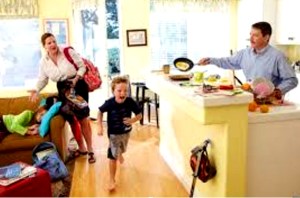by Don Fausel
The Serenity Prayer
God grant me the serenity
To accept the things I cannot change;
Courage to change the things I can;
And wisdom to know the difference.
Living one day at a time;
Enjoying one moment at a time;
Accepting hardships as the pathway to peace;
Taking, as He did, this sinful world
As it is, not as I would have it;
Trusting that He will make all things right
If I surrender to His Will;
So that I may be reasonably happy in this life
And supremely happy with Him
Forever and ever in the next.
Amen.
This well-known prayer expresses some guiding principles for our living a happy life here and forever, as the last four lines of the prayer proposes. Although there has been some controversy about whether the theologian-philosopher Reinhold Niebuhr, who perhaps was the greatest political-philosophy of the 20th century, was the original author of the prayer, those concerns have been settled. It’s not because it was adopted by the worldwide Alcoholics Anonymous and other 12 step programs, but by years of disciplined research. If you’re interested in learning more about how the controversy was solved, I suggest reading a four page article by Fred R. Shapiro titled Who Wrote the Serenity Prayer.
I was aware of The Serenity Prayer from several friends who were going to Twelve Step Programs, but It was sometime in the late 1970s that I really took the prayer seriously. To my surprise, one of my stepsons who was in his early teens became addicted to drugs. First he was abusing alcohol, then marijuana, and he soon “hit bottom” as they say in addiction programs. It was at that point when my stepson started his recovery in AA that I started to go to Codependents Anonymous a “…fellowship of relatives and friends of the addict and is composed of non-professionals, self-supporting, self-help groups.” From that point on, The Serenity Prayer became one of my everyday prayers.
Like all 12 Step Program meetings, they either start or end with the Serenity Prayer, and sometimes the group leader or one of members would “breakdown” each word of the first part of the prayer. In preparing this blog, I looked through some of my dusty files and found a handout written by hand that I vaguely remembered. I have no idea who wrote it, so I can’t provide the author’s name. It would have been one person’s interpretation of the prayer, and not necessarily something everyone agreed with, but the group would acknowledge the individual’s thoughtfulness. The meetings are about sharing thoughts, feelings and experiences. Here’s the example:
GOD—By saying this word I am admitting the existence of a Higher Power; a being greater then I.
GRANT—With the repeating of this second word I am admitting that his Higher Power is an authority who can bestow and give.
ME—I am asking something for myself. The Bible states that if I ask, I shall be given. It is not wrong to ask for betterment of myself for the improvement of my character, people around me will be happier.
THE SERENITY—I am asking for calmness, composure, and peace in life which will enable me to think straight and govern myself properly.
TO ACCEPT—I am resigning myself to conditions as they are right now.
THE THINGS I CANNOT CHANGE—I am accepting my lot in life as it is. Until I have the courage to change any part of my life, I must accept it and not accept it grudgingly.
COURAGE—I am asking for conditions to be different.
TO CHANGE—I am asking for help to make the right decisions. Everything is not perfect in my life. I must continue to face reality and constantly work towards continued growth and progress.
WISDOM—I am asking for the ability to form sound judgments in any and all matters.
TO KNOW—not just to guess or hope.
THE DIFFERENCE—I want to see things differently in my life so there can be some distinction. I need to sense a definite value in love over selfishness.
If you want to learn more about Codependence, here is a website titled A How To Guide to Recover from Codependency it starts off by giving the three C’s of recovery:
You didn’t Cause your loved one’s addiction.
You can’t Control it.
You can’t Cure it. (Believe me; I learned that the hard way.)
Guidelines for Finding Happiness and Serenity
Here are just a few suggestions for connecting Serenity with Happiness. The first one is the The Spiritual Serenity Series: 7 Steps to Inner Peace and Happiness . This is an eight-page article by Jared Akers. He breaks the process into seven steps: 1. Awareness 2. Acceptance 3. Identification 4. Self-Searching 5. Confession 6. Action 7. Maintenance. What I liked about Akers’s approach is that he has gone through all of the seven steps himself, and passes it on to anyone who thinks it’s might be helpful.
Perhaps you’ve read this article. It was the feature article and on the cover of Time Magazine in July 08, 2013. The title was The Pursuit of Happiness and the sub-title, Why Americans are Wired to Be Happy—and What That’s Doing to Us. If you only read what’s on the cover of the magazine, it’s worth checking it out.
Here’s one of my favorite TED TALKS on the future of our nation’s happiness: The title of Nic Marks’ TALK is The Happy Planet Index. As the blurb reads, “Nic Marks gathers evidence about what makes us happy, and uses it to promote policy that puts the well-being of people and the planet first. He is the founder of the Centre for Well-Being at the UK think tank New Economics Foundation (NEF).” His premise is that rather than having our Gross National Product measure everything, accept what makes life worthwhile: happiness.
Shalom.












